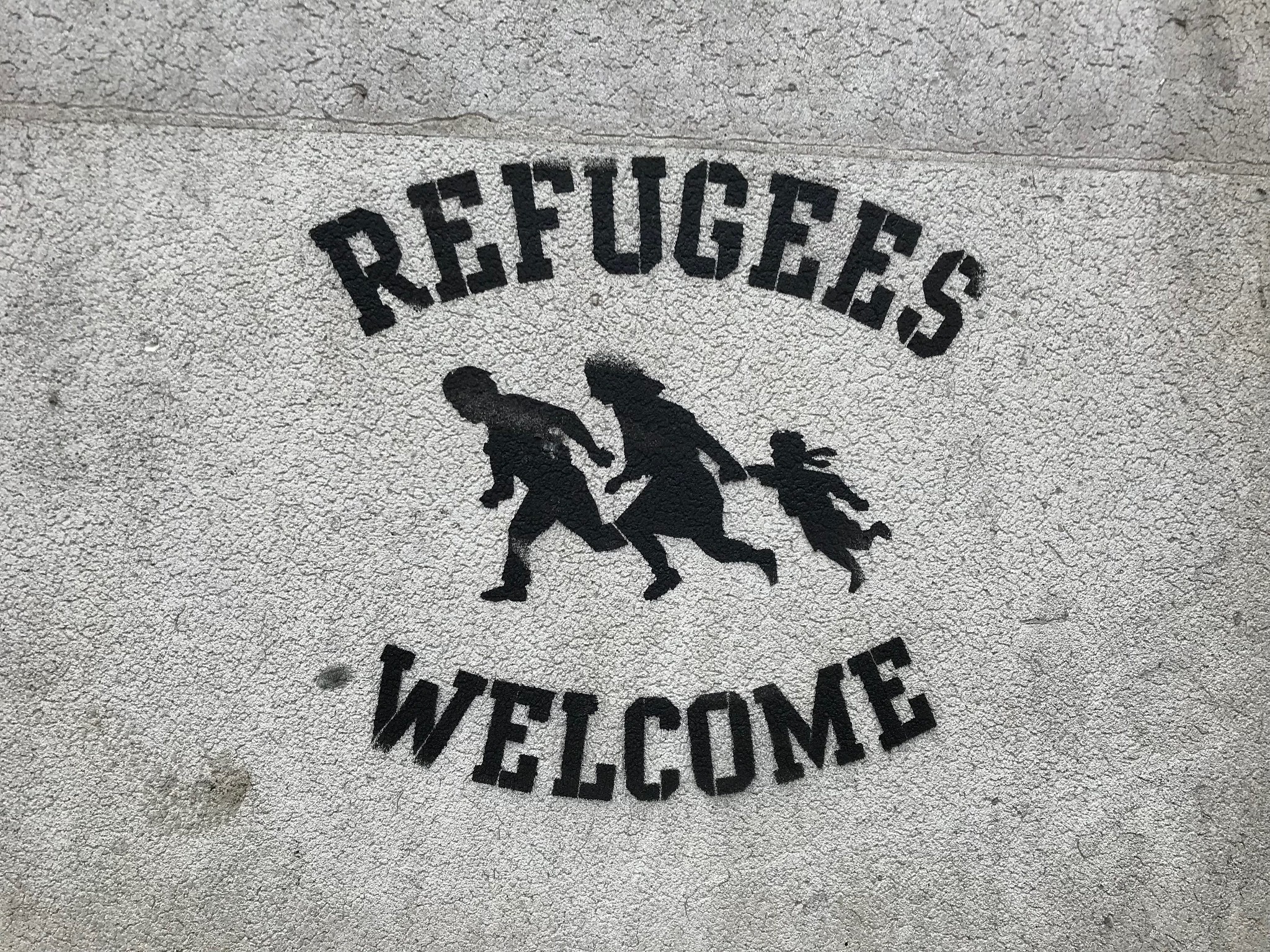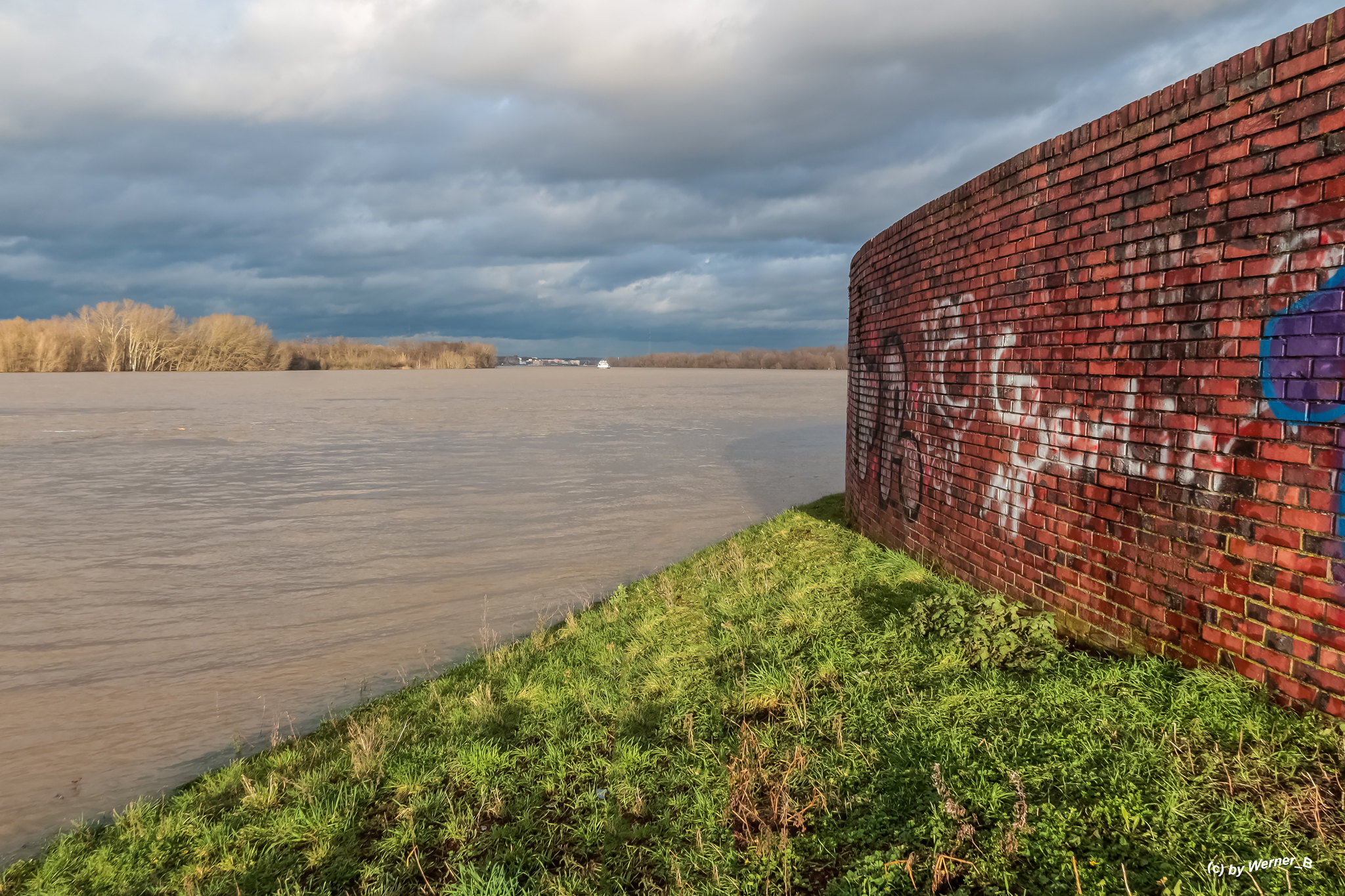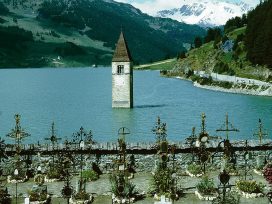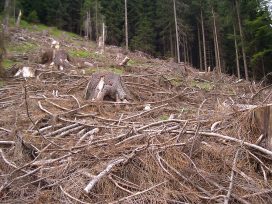A double-edged eco sword
Climate change affects us all yet not equally. The plight of those forced to migrate as a result – often called ‘climate refugees’, though not officially – has become contested ground between human rights/environmental activists and anti-asylum lobbyists. Could ‘ecologically displaced’, avoiding racialization, xenophobia and division, be a viable alternative?
In recent years, the spectre of the climate refugee has begun to haunt European politics. Whether in activist discussions or the speeches of former European Commission president Jean-Claude Juncker, the figure of the climate refugee is gaining in prominence.
Amid continued climate scepticism and raging anti-immigrant sentiment, the intertwined politics of climate change and migration are fraught with tension. But what merit does the term ‘climate refugee’ have, and what are some of the potential problems? Is there an alternative lens we should adopt in its place?

Image by Matt Brown via Flickr
Whilst the term ‘climate refugee’ effectively stresses the human repercussions of anthropogenic climate change, racialised discourses weaponise it to the exclusion of already marginalised populations. The notion of the refugee has often been misused, misshapen, and stigmatised to an extent in Europe which appears difficult to rescript. Academic Ben Wisner explains that people displaced by a warming climate have been identified by terms that add ‘fuel to xenophobia and racism’. After the extreme and careless political weaponisation of migration-related vocabulary, it may be time to pivot towards some new, more expansive language and take care in how we use it.
In search of meaning
In the 1951 UN Convention Relating to the Status of Refugees, a refugee is defined as someone who ‘owing to well-founded fear of being persecuted for reasons of race, religion, nationality, membership of a particular social group or political opinion, is outside the country of his [sic] nationality and is unable or, owing to such fear, is unwilling to avail himself [sic] of the protection of that country…’ The definition of a refugee relies on the notion of forced displacement, with a particular focus on (fear of) persecution as a driving factor of flight. This original definition is also wedded to the framework of nation states, designating national borders as the site at which a refugee comes into being.
Although there is no widely accepted definition, the climate refugee can be taken to be a person required to leave their local or national home because of negative changes to their environment due to a warming planet.
Whilst there is little that is obvious about such a loaded concept, it is evident that the issue of anthropogenic climate change is at the heart of thinking about the climate refugee. The term has already been used by mainstream media outlets to refer to refugees fleeing Syria, citing drought as the cause of their flight. Those displaced by drought in Syria are no doubt affected by their surrounding environments becoming uninhabitable spaces. However, the backdrop of political violence complicates this picture.
The definition of a climate refugee is thus embroiled in the difficult business of distinguishing the initial reason for the ecological breakdowns that cause the physical displacement of human communities and individuals. This is a conceptual difficulty which appears, in practice, to be impossible to resolve – how do we accurately distinguish between climate change and political violence as drivers of flight when the two can be intertwined? Climate change is likely to function as one of many compounding factors contributing to human displacement. It is hard to delimit the concept of the climate refugee to those whose displacement is exclusively driven by a change in the climate; a reason for which some call for the term to be abandoned.
Where words come alive
The notion of the climate refugee is by no means useless. The use of the term partly draws on a rights-based vocabulary with legal ramifications. Under international law, refugees have a right to safe asylum and countries ‘may not forcibly return (refoulement) refugees to a territory where they face danger or discriminate between groups of refugees’. This illustrates the notion that rights generate duties; the designation of refugee carries material weight, requiring host countries to provide for and protect them, not as an act of generosity but rather as a legal obligation. But the 1951 Geneva Convention does not have provisions for those whose displacement is caused by environmental factors. The term climate refugee might be more forceful if it carried legal weight – but as the convention stands, it does not.
Anti-asylum lobbyists in the Global North have even used the gap in international law to push back against migrant rights by arguing that ‘most asylum seekers are in fact “environmental refugees”, and as such have no claim to asylum under the 1951 Geneva Convention’. Moreover, anti-migration and anti-asylum rhetoric translates into hostile European migration policies which have serious consequences for people trying to flee uninhabitable environments. Detention camps are multiplying on the borders of Europe where conditions are dangerous and futures uncertain. Brutal legal frameworks which effectively criminalise displacement into Europe are being proposed in countries such as the UK. There is clearly an urgent need for a comprehensive legal framework that forcefully addresses ecological displacement and turns away from the divisive racism and xenophobia that plague European politics.
Elsewhere, the notion of the climate refugee can also be seen as a strategic catalyst for political action, targeting those who live in parts of the world that are not first in the climate firing line. We have seen this invocation of the climate refugee used as a wake-up call by politicians such as Juncker. With little controversy, Juncker’s warning of eventually unmanageable flows of climate refugees in Europe are designed to get ordinary people in Europe thinking about the ways in which we will all be affected by climate change in the future. This approach is not incoherent. It attempts to incite political action amongst the masses – arguably what is partly needed in order to arrive at more urgent solutions to the climate crisis. But this strategy is a double-edged sword.
Such strategies can be exploited by xenophobic narratives which whip up fear about climate refugees. These processes are already taking root in the UK media landscape, where the mobilisation of climate refugees has a distinct othering effect. Interestingly, a UNHCR commissioned report has linked hostile press coverage citing ‘climate migrants’ and ‘refugees’ to a rise in the prevalence of far-right politics. Though, arguably, today such rhetoric can be seen in left-leaning newspapers such as The Guardian, pointing to an increased normalisation and acceptance of exclusionary discourses.
Definitional difficulties aside, the tendency to construct the climate refugee as a racialised ‘other’ wins the term no support from anti-racist campaigners. Their concerns are understandable considering the increasingly hostile context.
Critical geographer Andrew Baldwin sees the figure of the climate as expressing ‘a set of white anxieties’ linked to ‘an impending loss of control and disorder’. The wide-ranging and eye-watering numbers used to talk about a future incoming ‘wave’ of climate refugees (supposedly somewhere between 50 million and 250 million) feeds into a concerned desire to ‘take back control’ – a phrase also used ardently and divisively in the Brexit campaign. The fears stoked around immigration as a means to incite action on climate change is consistent with ‘the nature-nation-purity nexus’ in Europe; a desire to maintain an insular, enclosed ‘purity’ of the European landscape and its communities, coded as white.
Refugee discourses in Europe are situated in the heavy historical contexts of European colonialism, Eurocentrism and widespread practices of orientalism. The idea of the climate refugee easily plays into the notion of ‘Europe as refuge’ as French philosopher Bruno Latour explains. Whilst Latour advocates a hospitable politics in the face of climate-related migration in Europe, this is a conceptual move which risks providing fodder for an orientalised construction of dangerous, faraway lands which hold a single, dark mass of refugees menacing an idealised Europe.
As we think about Europe as a small haven for climate refugees, there is a distinct lack of emphasis on the vulnerability of the displaced person, or the cause of their displacement, and, instead, a focus on the ostensible threats to Europe which has disproportionately contributed negatively to hostile natural, political and social environments across the Global South. With all the best intentions in the world, such assessments of the situation fall into the trap of the de-historicised climate refugee, failing to engage with climate justice as situated within historical global inequities.
Shedding the baggage
We cannot deny that there are some very powerful arguments in favour of official usage and adoption of the term. However, in terms of painting an accurate picture of the challenges that displaced humans are faced with in a changing environment, ‘climate refugee’ does not do the conceptual or political heavy lifting required. However, the terms ‘ecological displacement’ and/or ‘ecologically displaced persons’ overcome these failings.
A move towards the language of ecological displacement mirrors the International Organization for Migration’s usage of the term ‘environmentally displaced person’ which refers to ‘persons who are displaced within their country of habitual residence or who have crossed an international border and for whom environmental degradation, deterioration or destruction is a major cause of their displacement, although not necessarily the sole one.’
Whilst, indeed, anthropogenic climate change is a real threat to the livelihoods of humans (amongst other species), it is not the only environmental driver of displacement. By using the term ‘ecology’, we allow for a description which encompasses other potential displacement drivers beyond climate change, such as volcanic eruptions, landslides and air/water pollution. The term ‘ecology’, taken in a broader sense, also gives space to the potential compounding of multiple aspects which cause the displacement of people – for example, political violence; the effects of which could be exacerbated by a scarcity of resources or infertile land.

Rhein flood and protection wall. Image by Werner B. via Flickr
The term ecological displacement can encompass, for example, the displacement of flood-affected populations moving further inland from the coast of England. This inflation of the category, as opposed to that of climate refugees, may contribute to a de-racialisation of the notion of climate-related displacement. We have seen a series of environmental crises the past year in Europe: from flash flooding in the UK, Belgium, Germany and the Netherlands, to unrelenting fires across Greece. Unlike in its coverage of climate refugees, the British press has described the displacement caused in European countries in terms which much more explicitly tackle the source of the problem – climate change. Rather than stoking fears about invasive ‘waves’ of strange refugees clogging up the shores of Europe, the climatic cause of internal displacement is being established without the burden of racialisation, xenophobia and division. Such discussions centred on Europe enable audiences to cultivate compassion, sympathy and empathy for the current and potential victims of ecological change which are worryingly lacking in the racialised conversation about climate refugees.
More widely, we are arguably seeing a shift towards a conversation about how ecological issues are beginning to affect Europe, with many newspapers and media outlets covering the subject. Mainstream media outlets such as the BBC, The London Evening Standard and The Guardian are talking about the urgency of climate change as an issue which is happening now and in Europe. By joining up discussions around the ways that people are affected and displaced by ecological change within Europe, there is the potential to develop a more understanding attitude towards displaced coming from outside of Europe. Framing these conversations through a shared experience and vocabulary can complicate efforts to construct ecologically displaced people as threatening others. This can generate useful climate conversations that could empower people to act on climate change on the basis of solidarity, rather than divisive fear.
Crucially, unlike the historical use of the term refugee, the notion of ecological displacement fully recognises the ways in which environmental factors can contribute to migration/displacement – something which the current UN Convention does not do. We should recognise, however, that the notion of displacement does not currently harbour the full legal force that the term refugee does. Arguably, rethinking the legal strength and status of displaced persons will allow for greater rights for those who flee their homes, regardless of whether they cross national borders or not. As an alternative vocabulary, the notion of ecological displacement moves to shed the racialised baggage of the climate refugee whilst making itself available to populations who are internally displaced as a result of climate change and other biophysical changes, which may be compounded with further causes.
Decoding the notion of the climate refugee is no easy task. Whilst the idea of the refugee normally carries national and international legal obligations, we should remember that language always has important historical and political contexts which have real consequences for people it is wielded against.
There is no such legal category as a climate refugee. But even if there were, the category would struggle to do the work it should for those who are displaced for ecological reasons. The reference to ‘climate’ does not sufficiently take into account the wider ecology in which people find themselves, and the category of ‘refugee’ has been appropriated and warped by divisive political rhetoric in Europe.
Indeed, the notion of ecological displacement is by no means perfect either. But it goes some way to moving towards an idea which is better equipped to sensitively approach the challenges of displacement. By taking an expansive approach, it attempts to build an alternative framework which understands the layered complexity of what causes displacement, whilst aiming to strategically turn away from the racism and racialisation which is currently rearing its ugly head in Europe.
This article was first published in the Green European Journal.
Published 12 September 2022
Original in English
First published by Green European Journal (10 January 2022)
© Lydia Ayame Hiraide / Green European Journal / Eurozine
PDF/PRINTIn collaboration with
In focal points
Newsletter
Subscribe to know what’s worth thinking about.
Related Articles

Writing on the wall, writing on the water
Notes towards a reservoirian aesthetic
Engineered flooding displaces communities, eradicating the landmarks of family histories. When little remains, narratives about who controls water provide telling pointers – feature films raise complex questions about industrialization, linguistic minorities, and matriarchy versus youthful masculinity.

European railways are often praised for their comprehensive continental coverage, yet it frequently falls short of meeting the evolving needs of the public. This episode of Standard Time discusses public investment and corruption, and how railway systems could transform.






